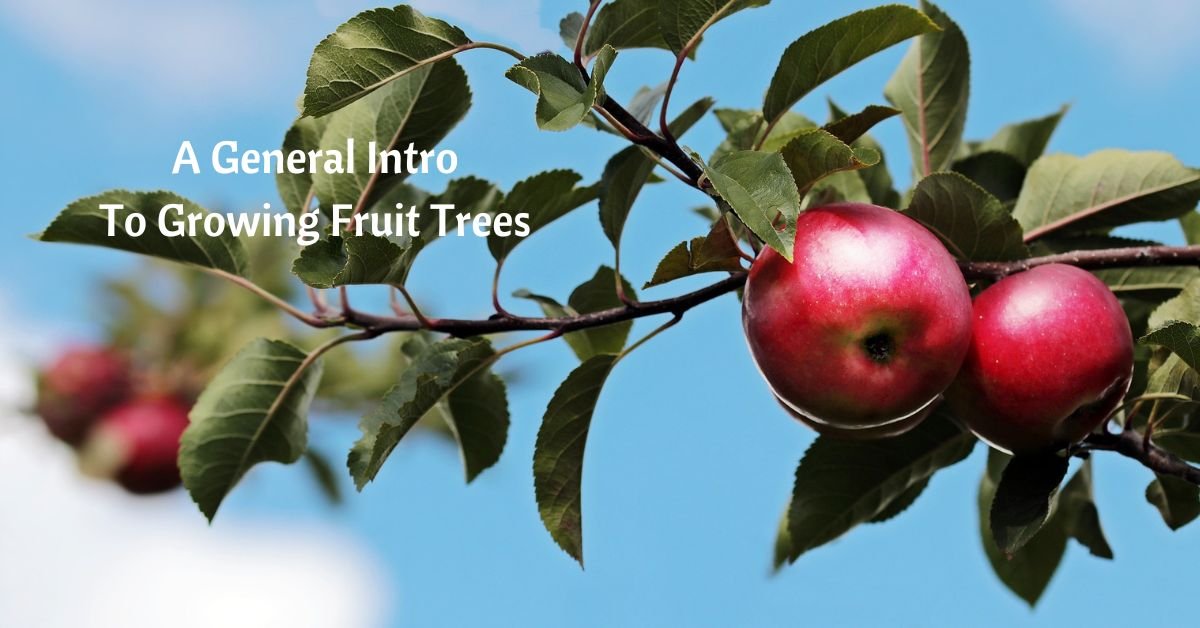Imagine stepping into your backyard and plucking ripe, juicy fruit straight from a tree that you planted and cared for yourself. With careful planning and nurturing, this dream can become a reality in your home garden.
In this short article, we’ll provide an overview of the world of fruit trees and dwarf fruit trees, covering everything from selecting the right variety to ensuring optimal growth.
Is Your Yard Suitable For Fruit Trees?
When deciding to grow fruit trees in your garden, you should consider several key factors.
First, assess the available space. Standard fruit trees can be quite large, often reaching 12 to 20 feet in both height and width. However, if space is limited, dwarf fruit trees are an excellent option, typically staying more compact at 6 to 10 feet in height and width.
Next, evaluate the sunlight in your chosen location. Most fruit trees thrive in full sun, requiring at least 6 to 8 hours of direct sunlight daily.
Lastly, keep in mind that fruit trees need consistent moisture, especially during the growing season and fruit development. Installing a drip irrigation system or soaker hoses can help maintain proper watering.
Choosing the Right Fruit Trees for Your Home Garden
Fruit trees are sensitive to the climate, so you have to pick the right ones for your area. Odds are, you won’t find varieties for your region in your local stores.
Most types of apples can grow in plant hardiness zones 3 – 9. Pears, cherries, and apricots are nearly as versatile, thriving in zones 4 – 9.
If you’re in zones 7 – 11, you could try your hand at figs. But you’ll need to be in zones 8 – 11 if you want to successfully produce citrus fruits or olives.
This is just a small list, of course; you can research your preferred fruits to determine whether they can thrive in your area.
Time to Grow and First Harvest
Growing fruit trees is not an instant gratification endeavor. Standard fruit trees can take several years to mature and produce fruit, with variations depending on the type of fruit. You should expect to wait at least 2 to 5 years after planting a sapling before your tree reaches maturity. Of course, it takes even longer to grow from a seed.
In contrast, dwarf fruit trees tend to bear fruit sooner, often within 2 to 3 years after planting. While the wait can be a test of patience, the anticipation of your first significant harvest is well worth it.
Depending on the variety, you may experience your first substantial harvest in 3 to 5 years for standard trees, while dwarf trees may yield fruit even sooner.
Pest Control and Risks
One of the ongoing challenges of fruit tree gardening is managing pests and diseases. To protect your fruit trees, keep a vigilant eye on them, conducting regular inspections of leaves, fruit, and branches.
Use organic pest control methods whenever possible, such as releasing beneficial insects, using neem oil, and applying natural repellents. Minimizing chemical intervention helps maintain a healthy garden ecosystem.
Proper pruning is another crucial aspect of pest management, as it helps maintain tree health, improve air circulation, and reduce the risk of disease. Learning the pruning techniques specific to your fruit tree variety will contribute to its overall vitality.
Additionally, correct fertilization is essential to ensure optimal growth and fruit production. However, it’s crucial to apply the right type and amount of fertilizer at the appropriate times, as over-fertilization can harm your trees.
Pollination and Frost Protection
For many fruit trees, successful pollination is a key factor in fruit production. Some varieties require cross-pollination with another tree of the same or compatible variety to produce fruit.
Consult with your local garden center to find out if you have the right pollinators in your area. If you have space, you can plant multiple trees of the same type. If not, and there aren’t plants nearby that can cross-pollinate yours, you may be condemned to a fruitless tree.
There are also self-pollinating varieties of many trees; look for these if you’re concerned about a lack of cross-pollination.
Be prepared for late frosts by covering your fruit trees with frost blankets or taking other protective measures during critical flowering and fruit-setting periods. Late frosts can damage blossoms and young fruit, so vigilance during this time is essential.
Harvesting and Enjoying Your Fruits
Finally, the moment you’ve been waiting for arrives when your fruit trees yield their delicious bounty. Timing is crucial when harvesting fruits. Each fruit type and variety has a unique ripening schedule, so consult specific guidelines for your trees.
Harvest fruits when they reach peak ripeness for the best flavor and quality. Proper harvesting techniques are essential to avoid damaging the tree or the fruit. Gently twist or cut the fruit from the tree to prevent injury.
After harvesting, store your fruits appropriately. Depending on the fruit type, this may involve placing them in a cool, dry place, the refrigerator, or canning and preserving them for year-round enjoyment.
Growing fruit trees in your home garden is a fulfilling endeavor that provides fresh, delicious fruits and a sense of accomplishment. Careful consideration of factors like space, sunlight, water, and specific tree requirements sets the stage for a thriving orchard. Whether you’re growing apples, pears, peaches, or citrus, the joy of harvesting your first fruits will make all your gardening efforts worthwhile.









